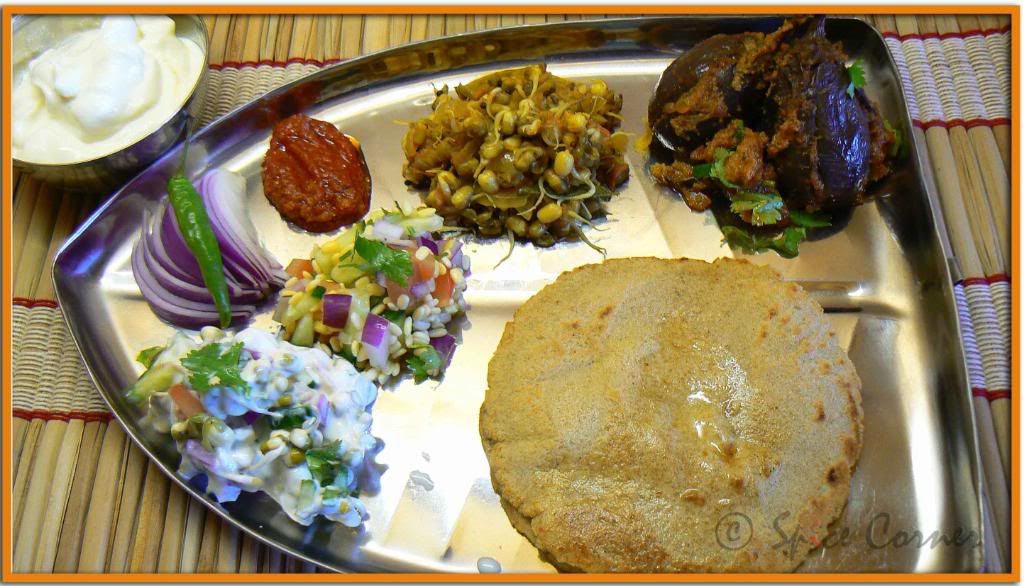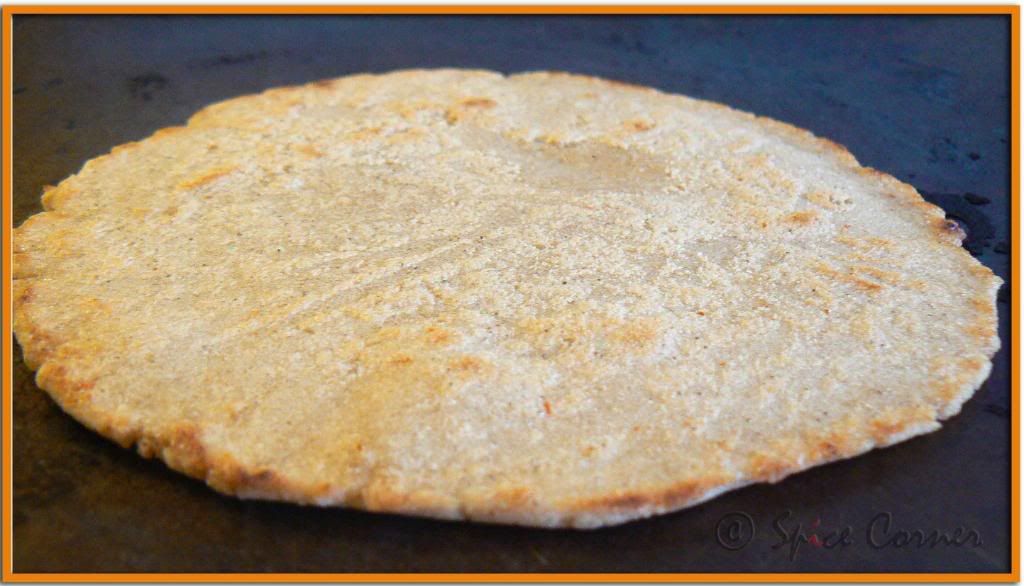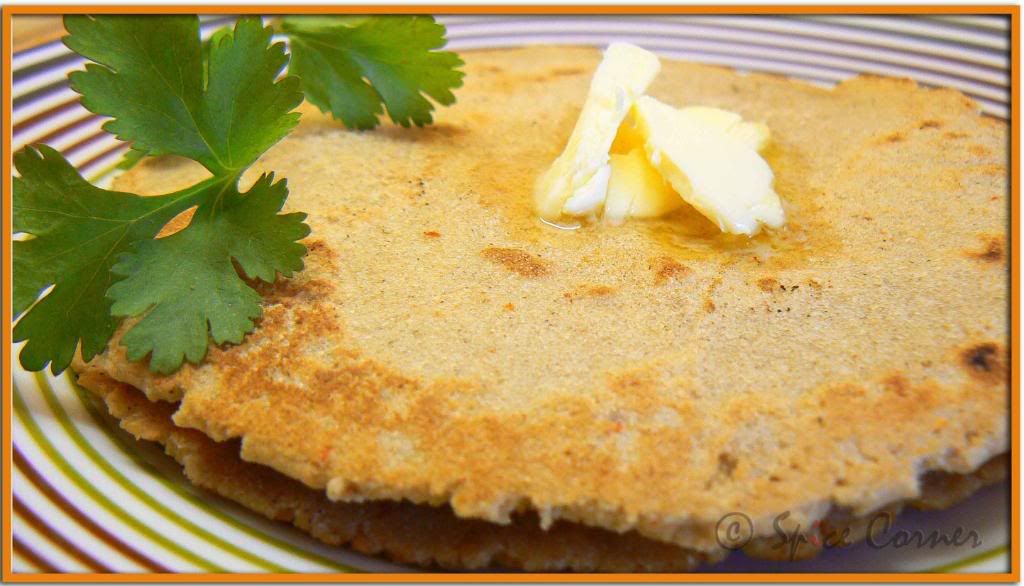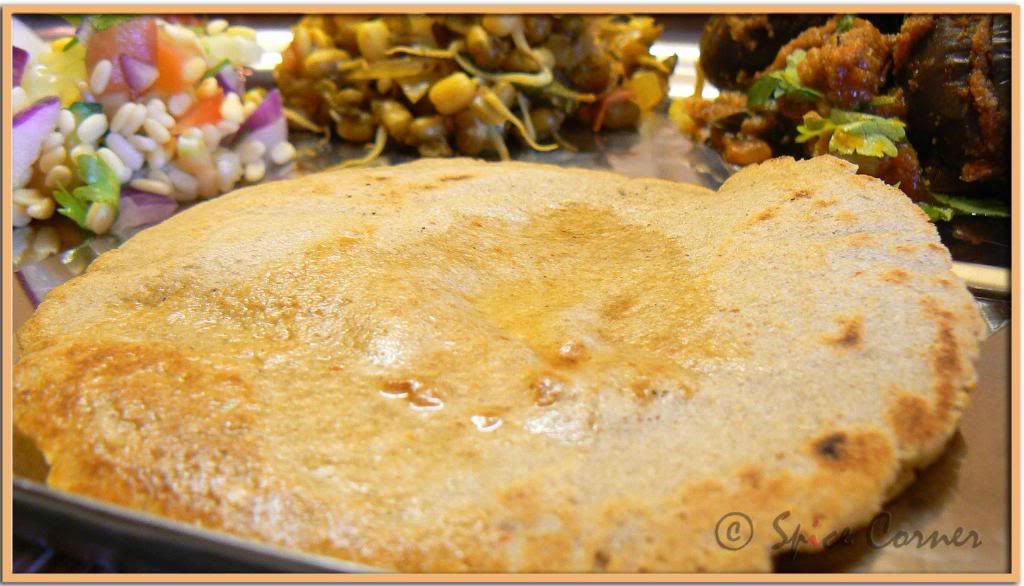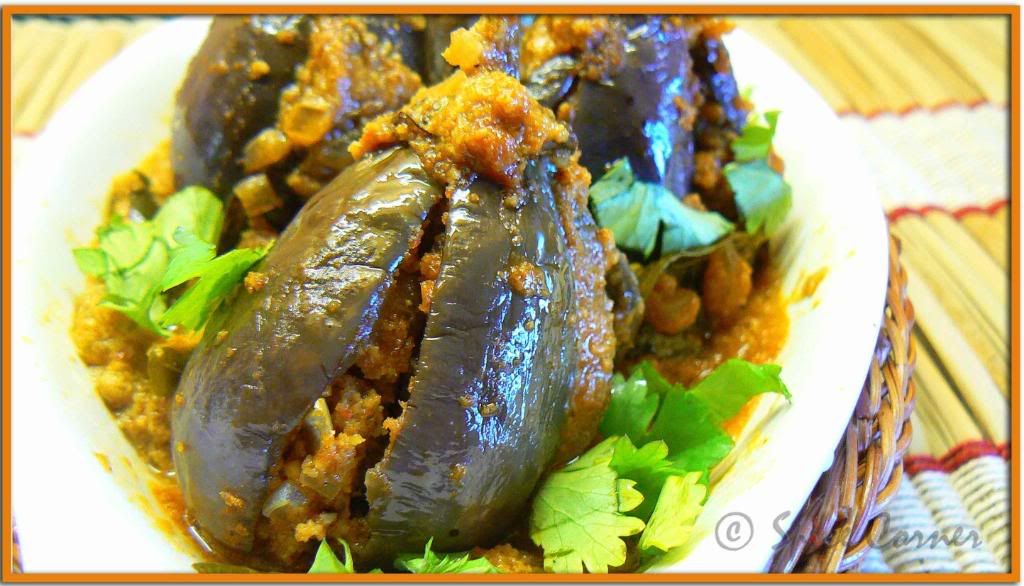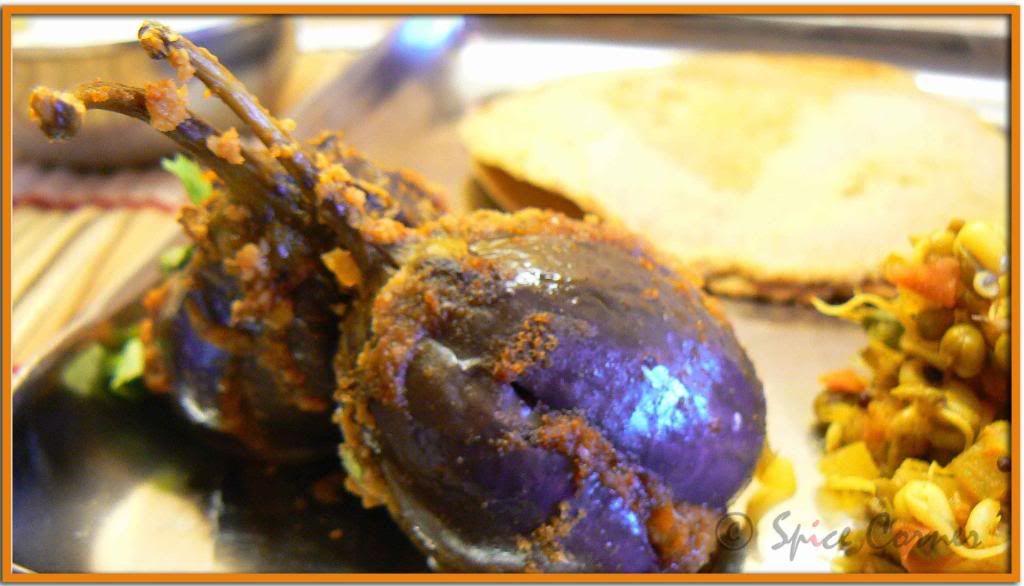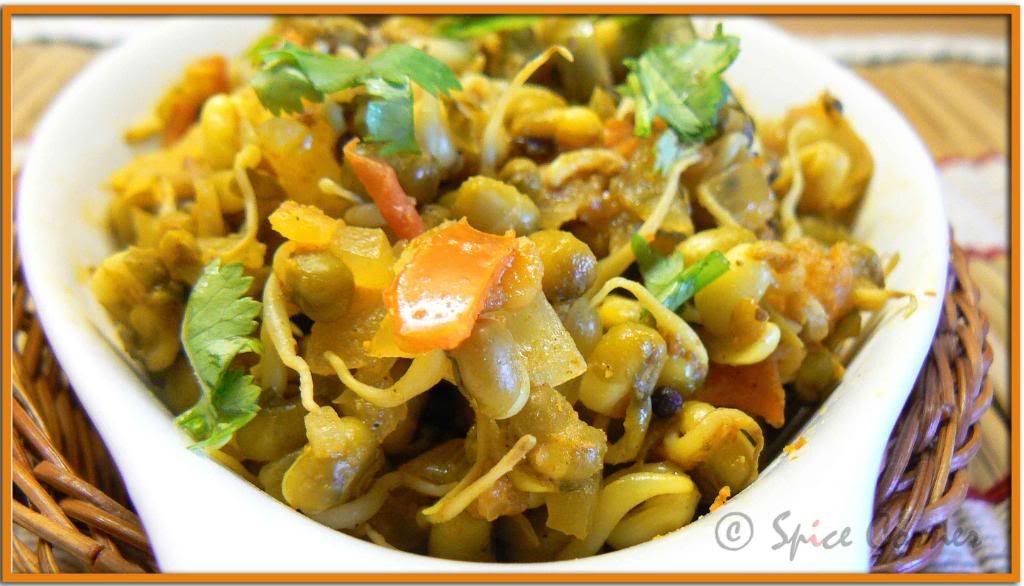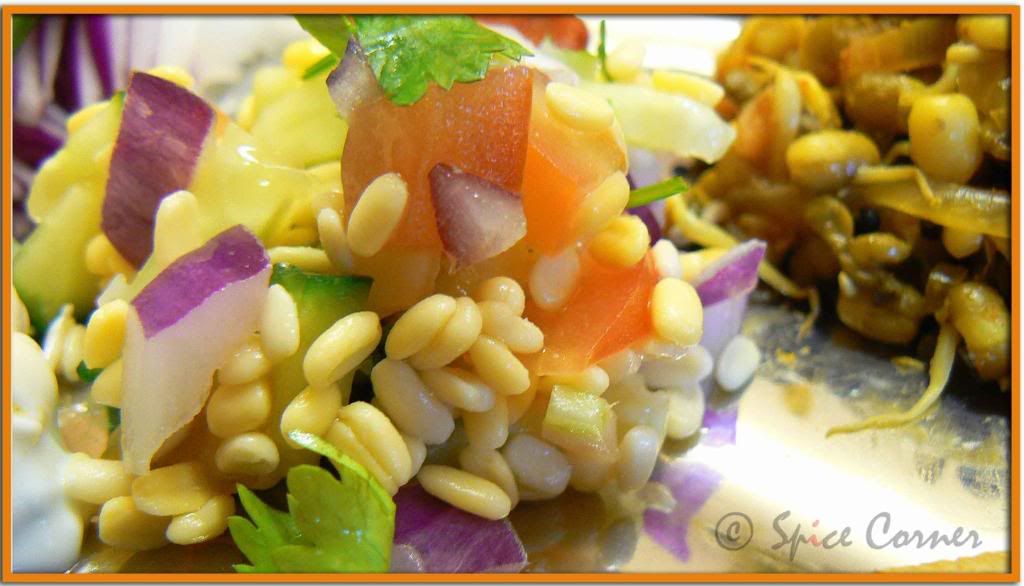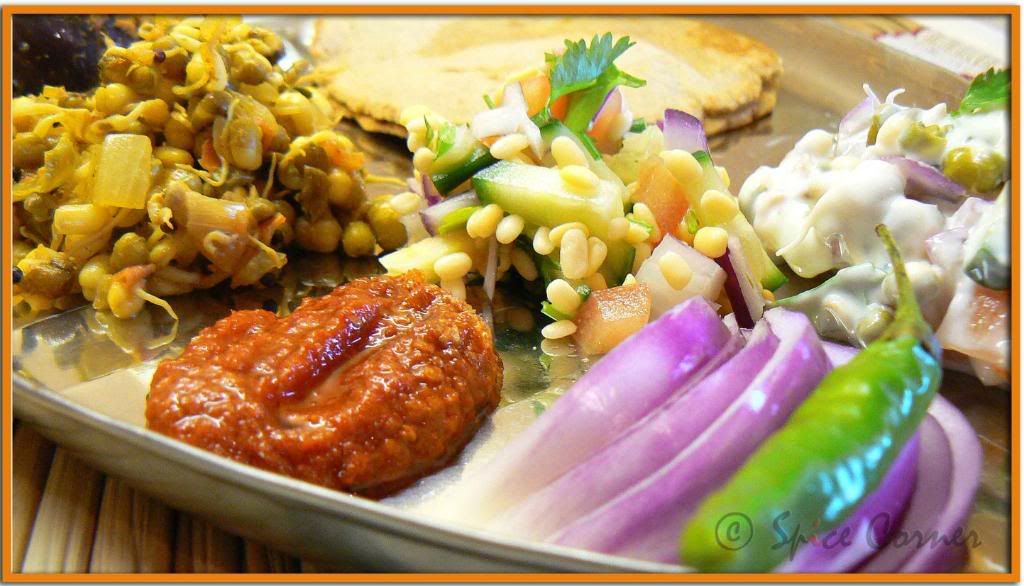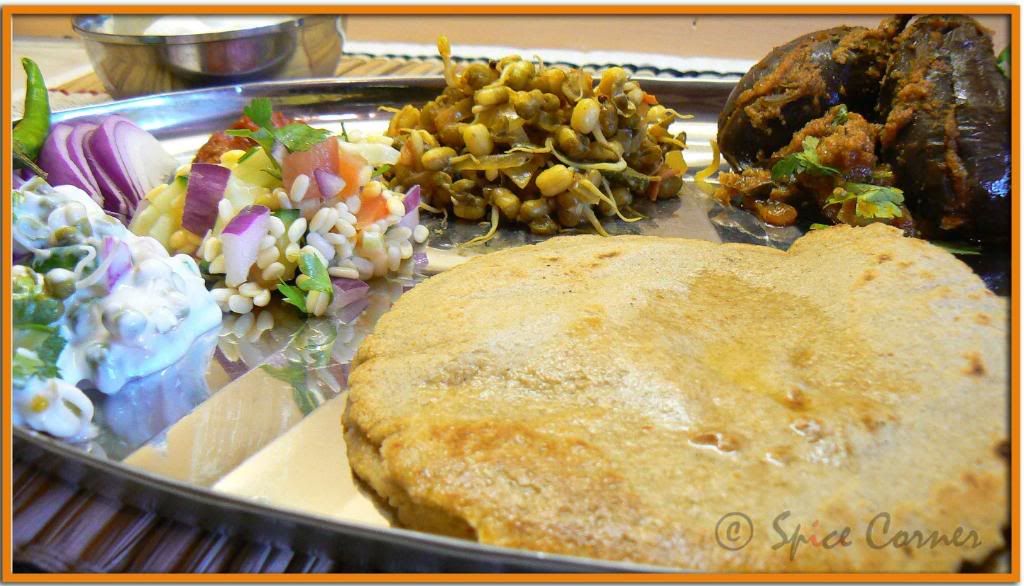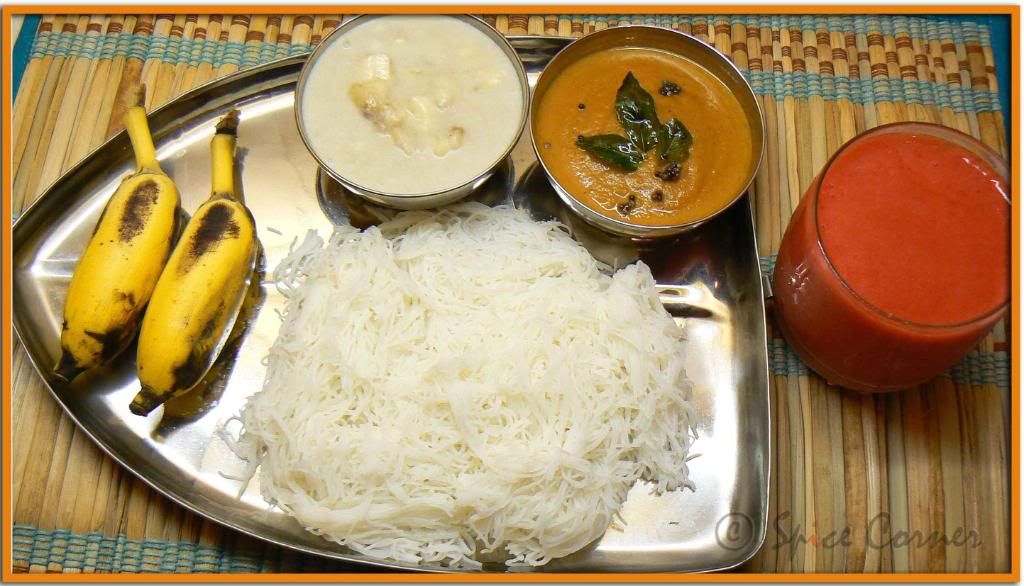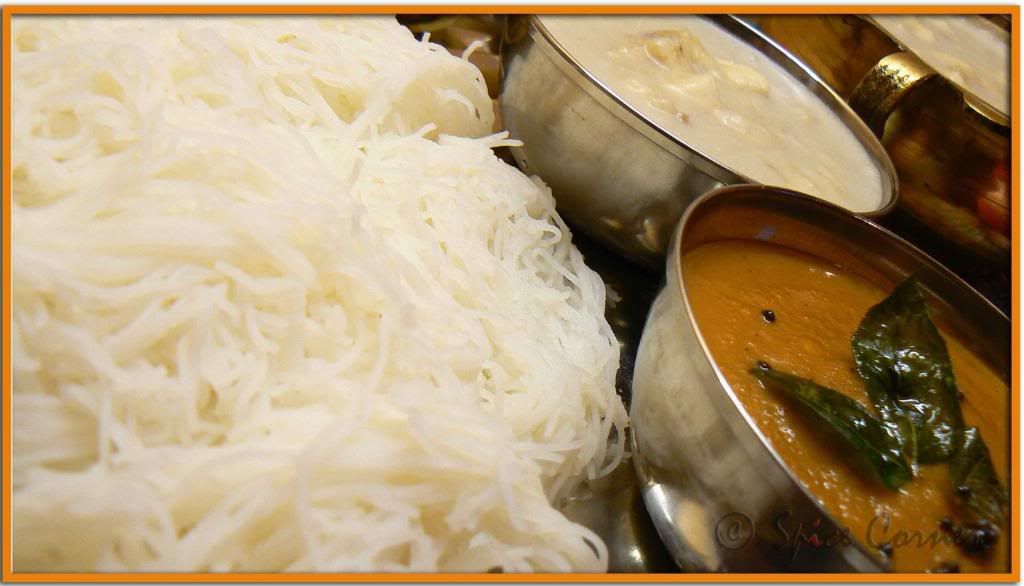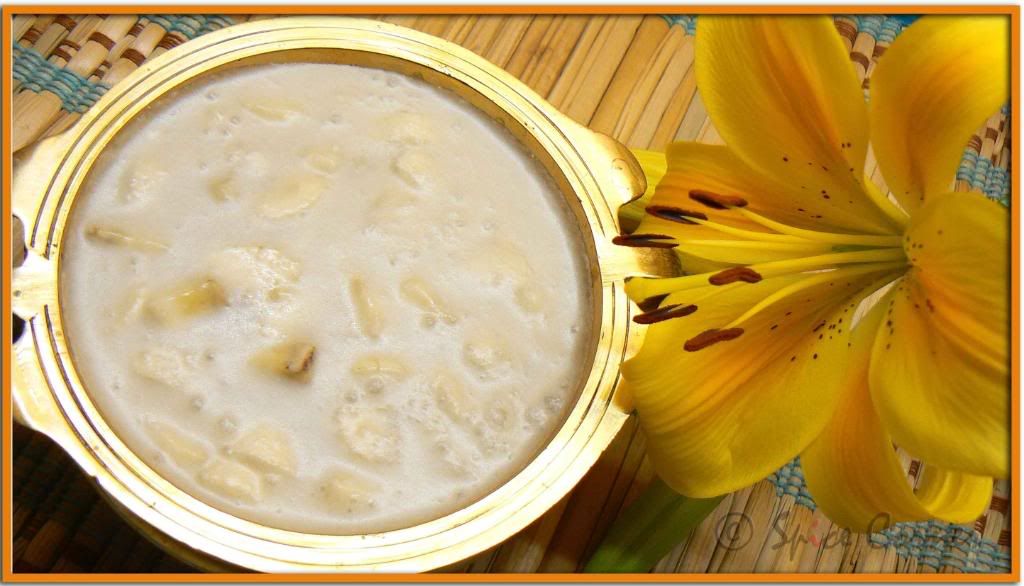
Patrode
Life has been busy for last couple of weeks. Hectic work schedule with my project going in full swing I hardly got time to post new recipes or to blog-hop. My project is coming along well, though I still have quite a few bugs to iron out. Its funny how time goes by and you don’t realise it. Was it just 2 years ago I was a carefree student? Yeah, I am going through a phase of college nostalgia and I am longing for those days when I could roll out of the bed any time of the day and into class or just hang out with my friends any day of the week, at any time in a day. When ever I put on my business suit every weekday morning, I find myself looking longingly at the flannel pajama and remember the days where I would sleep in until noon. Simple pleasures of life…
After busy weekdays at office, weekends have become luxury. After late night movies, parties and snacking most of the times we end up having brunch or lunch. At times on weekends there are moments where we don’t want to spend lots of time sweating in kitchen with elaborate meal menu and at the same time, not compromise on eating something special. By well planning and with little touch of creativity (and sometimes craziness) my hubby dear and I spend less than fifteen to twenty minutes in kitchen preparing food. For days like these dosa, idli batter come very handy which could be prepared well in advance and stored in fridge for days together.
One such dish which comes in handy is Patrode or Patra. Patrode is a much loved dish from Mangalore which is actually a steam cooked colocasia/collard greens leaves stuffed with spicy mixture of rice and dals and rolled in banana leaves. The earthy aroma imparted from banana leaves gives a very distinct flavour to this beautiful dish. You will not find any homes in Mangalore who have not tasted these spicy stuffed greens. Like any other Mangalorean, Patrode is my favourite and it was a pure torture to see them in food blogs while I was unable to get hold of any colacasia or collard greens. After almost one and half years of my not so successful hunt, I had almost given up my hope for finding these greens with great disappointment. Just when I was about to give up my hope God at last got time to listen to my silent prayer and there it was, lovely bundle of colacasia leaves tightly wrapped in a cling-film in a corner shelf of an Indian store. Before anyone could lay their hands on them I greedily grabbed three bundles and moved away trying to hide big grin and twinkle in my eyes as if I have conquered the world. As soon as we reached home all I could think of doing is eating Patrode. After a quick call to my Amma to confirm the ingredients I was all set to make my own Patrode for the very first time. Yes, at last the time has come where I too can show off Patrode in my blog;) I made big batch of Patrode and stored them in freezer wrapped tightly with cling film and zip-lock. Now I have enough Patrode in my freezer which will last for at least few weeks. All I have to do when I need them is defrost them and eat… Ah… Simple pleasures of life…
Back at home my Amma serves Patrode four ways. First way is to just serve sliced Patrode with coconut oil and a big piece of jaggery. Second way is to tawa fry sliced Patrode pieces with little oil. In third method, small chunks of Patrode is stir fried with seasonings and jaggery while in fourth method pieces of Patrode is cooked in Jeera-Coconut gravy. Usually Amma used to cook Patrode Uppukari and Patrode in Bendhi with left-over patrode. I will be giving detailed cooking instructions for all these methods today… Here we go…
One such dish which comes in handy is Patrode or Patra. Patrode is a much loved dish from Mangalore which is actually a steam cooked colocasia/collard greens leaves stuffed with spicy mixture of rice and dals and rolled in banana leaves. The earthy aroma imparted from banana leaves gives a very distinct flavour to this beautiful dish. You will not find any homes in Mangalore who have not tasted these spicy stuffed greens. Like any other Mangalorean, Patrode is my favourite and it was a pure torture to see them in food blogs while I was unable to get hold of any colacasia or collard greens. After almost one and half years of my not so successful hunt, I had almost given up my hope for finding these greens with great disappointment. Just when I was about to give up my hope God at last got time to listen to my silent prayer and there it was, lovely bundle of colacasia leaves tightly wrapped in a cling-film in a corner shelf of an Indian store. Before anyone could lay their hands on them I greedily grabbed three bundles and moved away trying to hide big grin and twinkle in my eyes as if I have conquered the world. As soon as we reached home all I could think of doing is eating Patrode. After a quick call to my Amma to confirm the ingredients I was all set to make my own Patrode for the very first time. Yes, at last the time has come where I too can show off Patrode in my blog;) I made big batch of Patrode and stored them in freezer wrapped tightly with cling film and zip-lock. Now I have enough Patrode in my freezer which will last for at least few weeks. All I have to do when I need them is defrost them and eat… Ah… Simple pleasures of life…
Back at home my Amma serves Patrode four ways. First way is to just serve sliced Patrode with coconut oil and a big piece of jaggery. Second way is to tawa fry sliced Patrode pieces with little oil. In third method, small chunks of Patrode is stir fried with seasonings and jaggery while in fourth method pieces of Patrode is cooked in Jeera-Coconut gravy. Usually Amma used to cook Patrode Uppukari and Patrode in Bendhi with left-over patrode. I will be giving detailed cooking instructions for all these methods today… Here we go…
 Print This Recipe
Print This RecipePatrode
Prep Time: 30 mins (Excluding Soaking Time)
Cooking Time: 20-30 mins
Serves: 3-4
Ingredients:
12-14 Colacasia/Taro/Collard Greens Leaves
1 cup Rice
½ cup Fresh/Frozen Coconut
½ cup Urad Dal
¼ cup Split Moong Dal
1½ tbsp Coriander Seeds
½ tbsp Jeera/Cumin Seeds
1 small Lime sized Tamarind Pulp
1 tbsp Jaggery
12-15 Red Chillies (Adjust according to taste)
Salt to taste
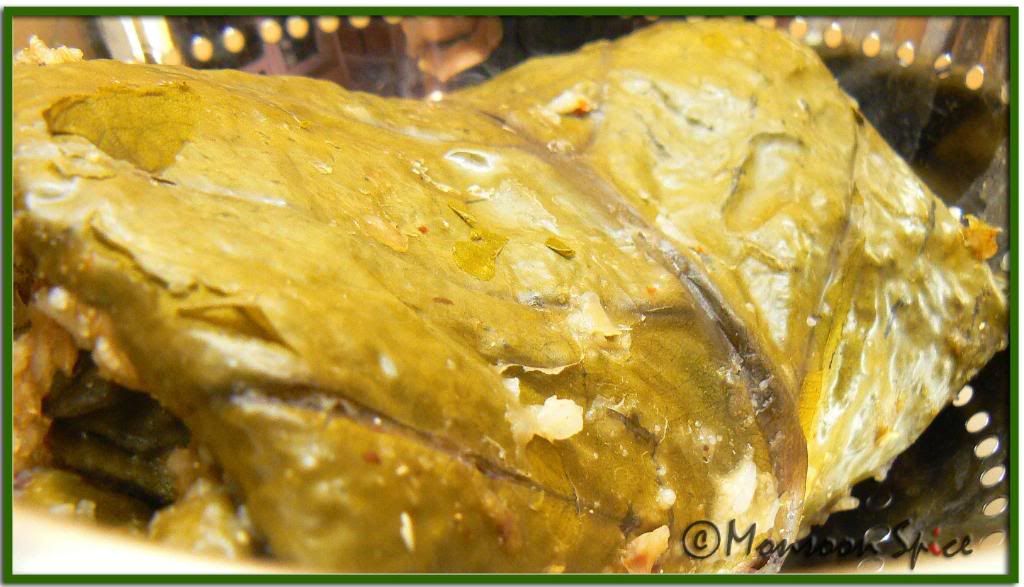
Patrode


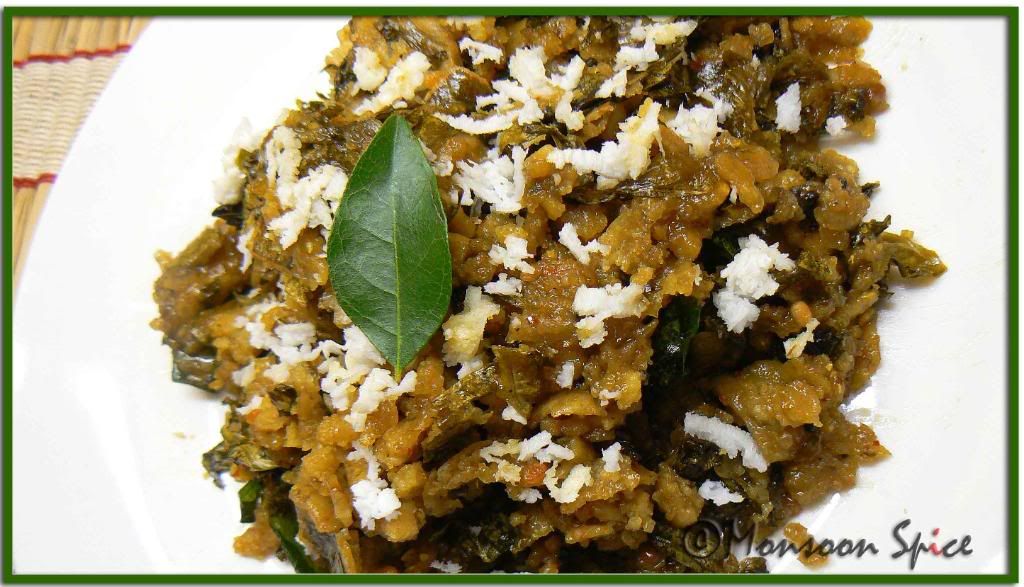
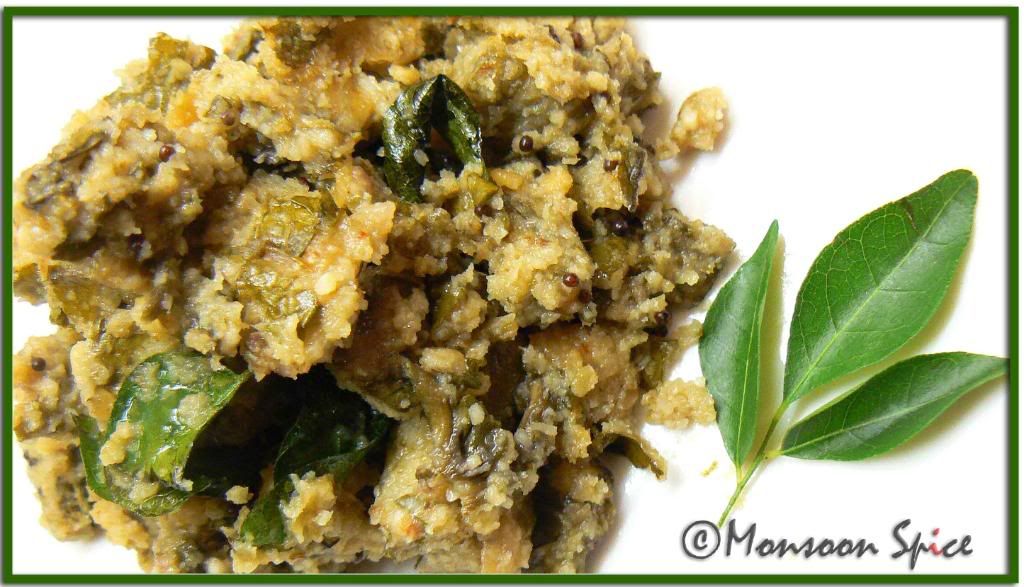
Method:
Soak rice, urad dal and moong dal in water for atleast 4 hours and rinse.
First grind coconut, coriander seeds, jeera, jaggary, tamarind pulp, red chillies to smooth paste and keep aside.
Next grind rice, urad dal and moong dal with water to coarse paste. The consistency and texture of the batter should be as that of idli batter.
Mix in both the paste and keep it aside.
Wash colacasia or collard green and pat them dry with kitchen towel.
Remove the thick veins of the green with small sharp knife or peeler. Lightly crush these veins with pestle so that rolling becomes easy. If the leaves are quite tender then no need to remove the veins.
Now pick the largest leaf and place it upside down, meaning the side where you have removed the veins is facing you. Apply thin coat of ground masala all over the leaf and place another leaf on top of it. Repeat the same procedure by placing 7-8 layers of leaves.
First fold both the edges along the length and then start rolling, tucking the sides in between till you reach the end of leaf. When rolled, it will look like swiss-rolls.
Place these rolls in a steamer and cook for 20-30 minutes on a medium flame. Once cooked, leave it in steamer for at least 15 minutes before serving them.
Once it is slightly cooled down, take a sharp knife and slice them into ½ inch slices.
Serve them with a tsp of coconut oil poured on top and a piece of Jaggery.
First grind coconut, coriander seeds, jeera, jaggary, tamarind pulp, red chillies to smooth paste and keep aside.
Next grind rice, urad dal and moong dal with water to coarse paste. The consistency and texture of the batter should be as that of idli batter.
Mix in both the paste and keep it aside.
Wash colacasia or collard green and pat them dry with kitchen towel.
Remove the thick veins of the green with small sharp knife or peeler. Lightly crush these veins with pestle so that rolling becomes easy. If the leaves are quite tender then no need to remove the veins.
Now pick the largest leaf and place it upside down, meaning the side where you have removed the veins is facing you. Apply thin coat of ground masala all over the leaf and place another leaf on top of it. Repeat the same procedure by placing 7-8 layers of leaves.
First fold both the edges along the length and then start rolling, tucking the sides in between till you reach the end of leaf. When rolled, it will look like swiss-rolls.
Place these rolls in a steamer and cook for 20-30 minutes on a medium flame. Once cooked, leave it in steamer for at least 15 minutes before serving them.
Once it is slightly cooled down, take a sharp knife and slice them into ½ inch slices.
Serve them with a tsp of coconut oil poured on top and a piece of Jaggery.

Tawa Fried Patrode
Tips:
Undercooked colacasia leaves can cause itchiness and irritation. So make sure that you cook them well.the itchiness is caused by the needle like calcium oxalate crystals present in the leaves. These crystals tend to be extremely irritating to the throat and mouth lining, causing burning and stinging sensation. (Source: www.ntbg.org)
Adding urad dal and moong dal reduces the heat produced by chillies and colacasia leaves.
Tamarind is added to reduce the itchiness of colacasia leaves. So increase the amount of tamarind if the leaves are quite mature.
Adding urad dal and moong dal reduces the heat produced by chillies and colacasia leaves.
Tamarind is added to reduce the itchiness of colacasia leaves. So increase the amount of tamarind if the leaves are quite mature.
Tawa fried Patrode
Prep Time: 2 mins
Cooking Time: 5 mins
Serves: Depends on Patrode slices
Prep Time: 2 mins
Cooking Time: 5 mins
Serves: Depends on Patrode slices
Ingredients:
Few slices of Patrode
Oil (preferably Coconut oil)

Tawa Fried Patrode
Method:
Heat tawa/griddle and spread a tbsp of oil on it.
Place Patrode slices on tawa and fry till the sides turn crisp and golden brown.
Serve hot with Jagger or Coconut Chutney or Tender Mango Pickle or eat as it is.
Patrode Uppukari is usually made with left-over patrode. This is what we usually cook for weekend brunch when we don’t want to spend more time in front of gas yet crave for something special and home made. It hardly takes more than 10 minutes to cook from frozen Patrode.
Place Patrode slices on tawa and fry till the sides turn crisp and golden brown.
Serve hot with Jagger or Coconut Chutney or Tender Mango Pickle or eat as it is.
Patrode Uppukari is usually made with left-over patrode. This is what we usually cook for weekend brunch when we don’t want to spend more time in front of gas yet crave for something special and home made. It hardly takes more than 10 minutes to cook from frozen Patrode.
Patrode Uppkari
Prep Time: 5 mins
Cooking Time: 5-8 mins
Serves: 2-3
Prep Time: 5 mins
Cooking Time: 5-8 mins
Serves: 2-3
Ingredients:
3 cups Patrode pieces, chopped into 1 cm cubes
2 tbsp Jaggery
1 tsp Mustard Seeds
2 tsp Urad Dal
2 Dry Red Chillies
Few Curry Leaves
A pinch of Hing/Asafoetida
2 tbsp Fresh/Frozen Coconut gratings
2 tbsp Oil (preferably Coconut Oil)

Patrode Uppkari
Method:
Heat oil in a pan and add urad dal, dry chillies, mustard seeds, hing and curry leaves.
When mustard starts to pop and sputter, add chopped Patrode pieces and Jaggary.
Keep mixing the mixture till the pieces are just heated.
Switch off the gas and mix in grated coconut and mix well and serve hot.
Patrode in Jeera-Coconut Bendhi is another delicacy from my Ajji’s kitchen. The spicy Patrode is cooked in sweet coconut chutney/bendhi is a marriage made in heaven.
Heat oil in a pan and add urad dal, dry chillies, mustard seeds, hing and curry leaves.
When mustard starts to pop and sputter, add chopped Patrode pieces and Jaggary.
Keep mixing the mixture till the pieces are just heated.
Switch off the gas and mix in grated coconut and mix well and serve hot.
Patrode in Jeera-Coconut Bendhi is another delicacy from my Ajji’s kitchen. The spicy Patrode is cooked in sweet coconut chutney/bendhi is a marriage made in heaven.
Patrode in Jeera-Coconut Bendhi
Prep Time: 10 mins
Cooking Time: 5-8 mins
Serves: 2-3
Prep Time: 10 mins
Cooking Time: 5-8 mins
Serves: 2-3
Ingredients:
3 cups Patrode pieces, chopped into 1 cm cubes
1 tbsp Jaggery
1 cup Fresh/Frozen Coconut
1 tsp Jeera
1 tsp Mustard Seeds
2 tsp Urad Dal
2 Dry Red Chillies
Few Curry Leaves
A pinch of Hing/Asafoetida
2 tbsp Oil (preferably Coconut Oil)

Patrode in Jeera-Coconut Bendhi
Method:
Grind coconut and jeera with little oil to smooth paste of chutney consistency.
Heat oil in a pan and add urad dal, dry chillies, mustard seeds, hing and curry leaves.
When mustard starts to pop and sputter, add ground coconut-jeera and jaggery and bring it to gentle boil for about 5 minutes.
Now add Patrode pieces and mix well coating all the pieces with Coconut-Jeera Bendhi and stir fry it for 2-3 minutes and serve hot.
Grind coconut and jeera with little oil to smooth paste of chutney consistency.
Heat oil in a pan and add urad dal, dry chillies, mustard seeds, hing and curry leaves.
When mustard starts to pop and sputter, add ground coconut-jeera and jaggery and bring it to gentle boil for about 5 minutes.
Now add Patrode pieces and mix well coating all the pieces with Coconut-Jeera Bendhi and stir fry it for 2-3 minutes and serve hot.

